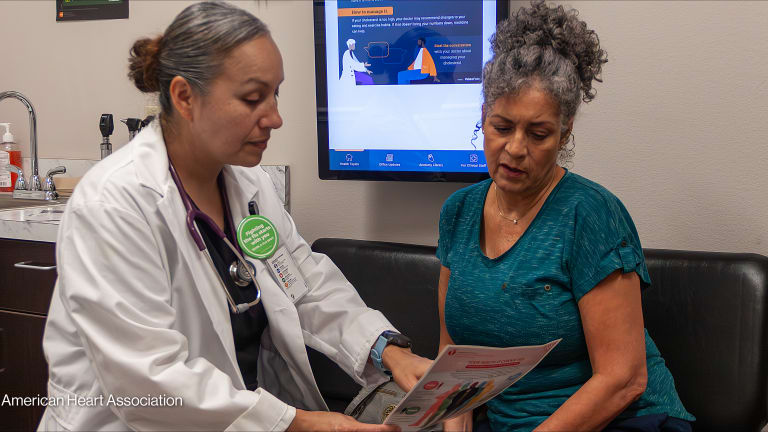
Amputation can occur in a split second, and that split second can be all it takes for life to change completely. As people who have lost limbs, we know firsthand the trauma and the frustration surrounding the rehabilitation process. However, we are some of the lucky minority: We have prosthetics and can function with little restriction.
An estimated 65 million people are living with limb loss worldwide. About 64% of these people live in low- and middle-income countries. Only 1 in 10 of those in need have access to assistive devices, driven by clinical care barriers, insufficient clinical expertise, staffing levels, and infrastructure.
COVID-19 has exacerbated widespread gaps in access to care for people with disabilities. An inability to access health care services means more than just a restriction on mobility; it also limits access to education and employment. In Rwanda, 98.8% of people living with disabilities are unemployed.
Programs that improve awareness around people with disabilities have been shown to have a profound effect on employment. Following the 2012 Paralympic Games in London, the number of employed people with disabilities in the United Kingdom increased from 2.9 million in 2013 to 4.2 million in 2019. Access to appropriate mobility services and education is also critical for people with limb loss, providing an opportunity for equitable societal participation.
A key barrier to accessing clinical services is the lack of trained prosthetists. About 75% of low- and middle-income countries do not have prosthetics and orthotics training programs. Fortunately, countries such as Rwanda are working to improve rehabilitation services.
The University of Rwanda, the only school in the country that offers professional prosthetics and orthotics certification, is building a Regional Centre of Excellence in Biomedical Engineering and eHealth. In Southeast Asia, Exceed Worldwide and The Nippon Foundation have been creating regional capabilities through new prosthetics and orthotics schools.
We must invest in the continued education of clinical prosthetics and orthotics professionals by establishing well-equipped institutions that help educate and create stable careers. While various countries have made significant effort in their support for people with limb loss, most still have a long way to go.
We must redefine what inclusion means, adapting the interdisciplinary collaboration model to serve our limb loss community.
—In Rwanda, the success of the community-based health care program, which encourages collaboration between the community and health care providers, can help reduce the burden on prosthetists by redirecting some of the tasks to trained community health workers.
This system would create a dual solution: freeing prosthetic centers for clinical work, while encouraging community ownership of individual health requirements. This model has proved effective in many other areas, such as maternal and child health. The government can also ensure that community-based health insurance, used by 85% of Rwandans, includes prosthetics coverage across all clinical centers.
Rwanda is known for its refusal to rely on international aid to solve domestic concerns, adopting an ideology of communal economic self-reliance known as “kwigira.”
In December, this spirit of self-reliance was demonstrated through a partnership of the University of Global Health Equity and Imperial College London, which brought together international experts in the fields of amputation surgery, prosthetic care and technology, and rehabilitation for a virtual conference.
This conference identified two recurring themes: the need for interdisciplinary collaboration at all levels of patient care and the need to acknowledge the diversity within the limb loss community.
The treatment of amputation must focus on the restoration of maximum, holistic function for the patient. We have seen from institutions in the United States and U.K., for example, that proper interdisciplinary collaboration is essential for enabling amputees to reclaim their independence, even achieving levels of physical functionality comparable with people without limb loss.
Unfortunately, this rehabilitation model is currently the exception rather than the rule. The family, prosthetist, physiotherapist, and surgeon must be united in their efforts to deliver the best care for the patient according to their economic, environmental, lifestyle, and cultural — or EELC — needs.
Rehab professionals must keep in mind that diversity is vast, and amputation treatment cannot be the same from one place to the next. The idea that what has been designed for someone in the U.K. will therefore be appropriate for a person in Rwanda, and vice versa, must be avoided.
Yes, technologies are translatable and applicable, but the bigger picture must always be understood — different EELC situations must remain in focus during all design and treatment processes.
It is critical to invest in progressive rehabilitative services to contribute to an inclusive system of care. We must redefine what inclusion means, adapting the interdisciplinary collaboration model to serve our limb loss community. It is also imperative that we curate a continuing narrative that highlights potential and resilience.
The meticulous construction of a ground-up health care system, such as the community-based model in Rwanda, has created all of the necessary foundational elements of successful health care provision for people with limb loss.
These models naturally bring the patient, their family, and the community into one large, self-reliant unit, complete with the multidisciplinary health care practitioners required to deliver care. Investment in these models, with the right partnerships and technology development, offers enormous potential for expanding effective and inclusive clinical treatment for people with limb loss.









